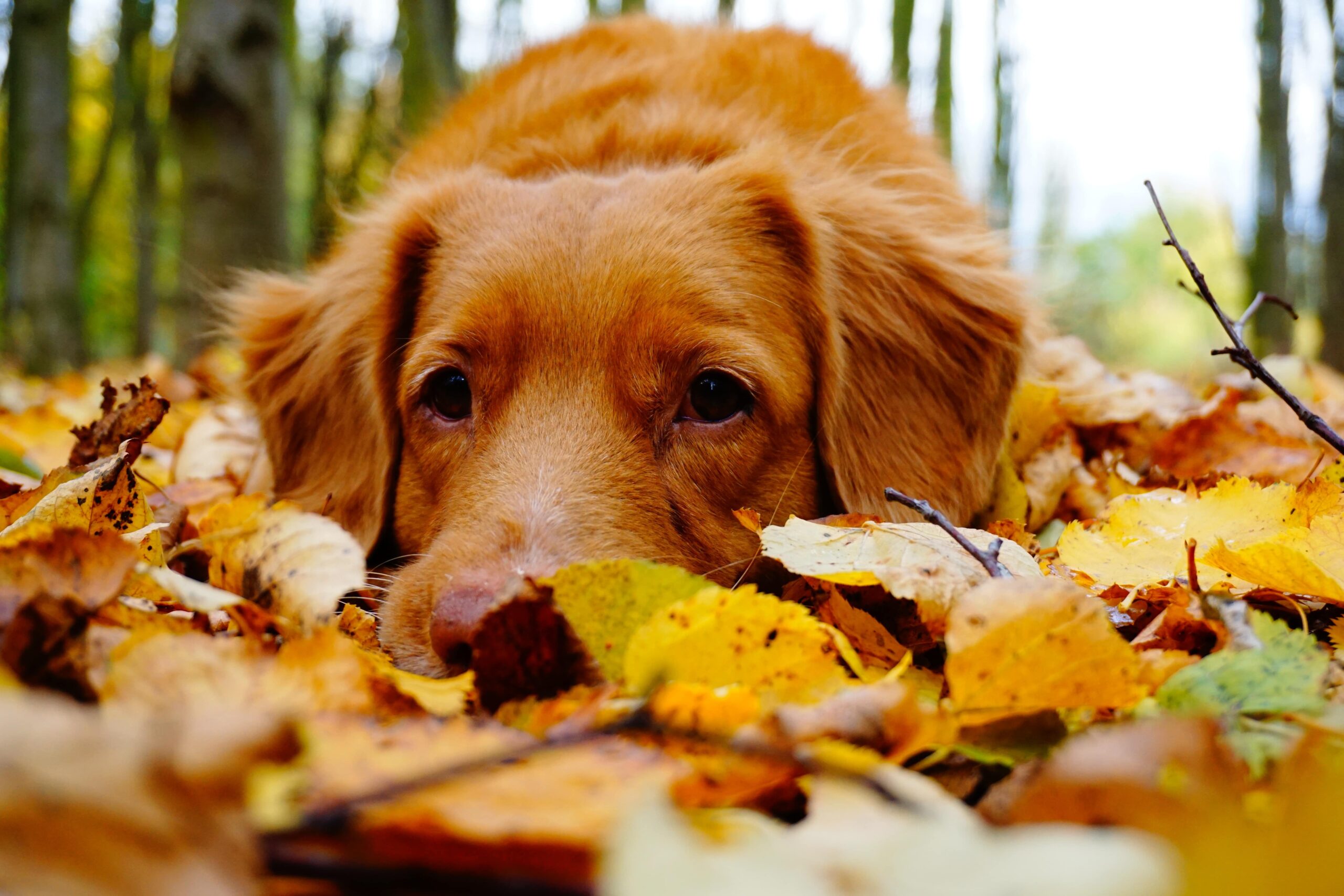As the leaves turn golden and the air grows crisper, the transition from summer to autumn ushers in a time of significant change, not just for us, but for our beloved pets as well. This shift in seasons brings about a new set of considerations for pet wellness, particularly as we move away from the long, hot days of summer and welcome the cooler, shorter days of fall.
For pet owners, this period requires a thoughtful approach to adjust care routines, ensuring our dogs and cats remain comfortable, healthy, and happy. The change in weather can affect pets in various ways – from their nutritional needs to their exercise routines and even their mental health. Recognizing and adapting to these changes is essential in maintaining the overall well-being of our furry family members.
Whether you’re a dog lover, a cat enthusiast, or the proud parent of both, this guide is crafted to help you navigate the autumn season with ease. We will explore the crucial aspects of autumn pet care, tailored to address the unique needs of both dogs and cats. By staying informed and proactive, you can ensure that your pets not only adjust to but thrive during this picturesque but often challenging time of year.
Adjusting to Cooler Weather
As the warmth of summer gives way to the cooler days of autumn, it is important to reconsider our pets’ comfort and warmth. The drop in temperature can particularly affect pets that are accustomed to the heat, making it essential to prepare them for the change. Shorter-haired breeds, especially, may need extra help to stay warm as the weather cools.
One of the first steps in autumn pet care is updating their sleeping arrangements. Investing in warmer bedding can make a significant difference in ensuring your pet’s comfort during chilly nights. Look for beds that are well-insulated and made of materials that retain heat. Placing these beds in draft-free areas away from doors and windows will further help in keeping your pet warm and cozy.
For pets that spend time outdoors or go for walks, consider pet apparel as a practical solution to keep them warm. A variety of pet clothing options are available, ranging from sweaters to jackets, specifically designed for different breeds and sizes. These not only help in retaining body heat but also add an element of style to your pet’s daily routine. Remember, however, that not all pets are comfortable wearing clothes, so it’s important to choose items that are comfortable and non-restrictive, and to monitor your pet’s response to them.
In addition to these measures, gradually acclimating your pets to the colder temperatures is crucial. This can involve increasing indoor time and reducing the duration of outdoor activities, especially during particularly cold days. It’s a balancing act to ensure they still get enough exercise and stimulation while protecting them from the cold.
By taking these steps, you can help your pets transition smoothly into the cooler autumn weather, ensuring their comfort and warmth.
Managing Seasonal Allergies and Health
Autumn not only brings a change in weather but also ushers in common allergens that can affect the health and comfort of our pets. Understanding and managing these allergens is crucial for ensuring a happy and healthy season for our furry companions.
Common autumn allergens include pollen from weeds, mold spores from fallen leaves, and even the drier indoor air as we start to heat our homes. These allergens can cause symptoms in pets such as itching, sneezing, skin irritations, and respiratory issues. To combat these, regular cleaning of your pet’s bedding, avoiding areas with high pollen during walks, and using air purifiers can significantly help in reducing their exposure to allergens. Bathing your pets more frequently during autumn can also help remove allergens from their fur and skin, providing relief from itching and irritation.
Regular veterinary care plays a pivotal role in identifying and managing these allergies. Seasonal check-ups can help catch any allergy-related issues early on. Veterinarians can provide tailored advice and treatments based on your pet’s specific needs, which may include antihistamines, special shampoos, or dietary adjustments. These health checks are also an opportunity to discuss any other concerns you might have about your pet’s health as the seasons change.
Maintaining a proactive approach to your pet’s health during autumn can prevent many issues related to allergies and ensure your pet stays comfortable and healthy. Remember, a little extra care can go a long way in ensuring your pet enjoys the beauty of autumn without the discomfort of allergies.
Nutritional Needs in Autumn
As the cooler months of autumn approach, it’s time to reassess the dietary needs of our pets. The seasonal change brings shorter and colder days, which often lead to a decrease in our pets’ activity levels. This shift necessitates a careful evaluation and possible adjustment of their diets.
A well-balanced diet is crucial for pet health during autumn. Ensuring that your pet’s diet remains rich in proteins, fats, carbohydrates, vitamins, and minerals is essential for their overall well-being. As their activity levels might decrease, it’s equally important to monitor and possibly adjust their caloric intake to prevent weight gain, a common issue during less active seasons. A nutritious, balanced diet not only supports their general health but also sets the stage for addressing more specific needs, such as joint health.
In the realm of joint health and overall wellness, Essential OMEGAS, particularly the all-natural, green-lipped mussel oil from New Zealand, play a pivotal role. This unique Omega supplement is exceptional not just for its DHA and EPA content but also for containing ETA (eicosatetraenoic acid), known for its powerful anti-inflammatory properties. Such properties become increasingly important as pets, especially older ones, may experience heightened joint discomfort with the onset of cooler weather.
The natural composition of green-lipped mussel oil, which includes glucosamine and chondroitin, is especially beneficial. These components are renowned for maintaining joint health and mobility, aiding in the repair and rejuvenation of cartilage, reducing inflammation, and easing joint discomfort.
Incorporating Essential OMEGAS into your pet’s autumn diet, therefore, not only addresses the general nutritional needs but also provides targeted support for joint health. Beyond supporting joints, these supplements contribute to a healthy coat, skin health, and overall cognitive function.
Keeping Pets Active Indoors and Outdoors
As the autumn season brings shorter days and cooler temperatures, maintaining a regular exercise routine for your pets becomes more important than ever. Both indoor play and outdoor exercise are crucial for keeping your pet physically fit and mentally stimulated during this time of year.
Indoor Activities
Engaging in indoor activities is a great way to keep your pets active when the weather doesn’t permit outdoor adventures. You can set up mini obstacle courses using household items, engage in interactive games like hide-and-seek with treats, or even teach them new tricks. Puzzle toys are also excellent for mental stimulation, helping to keep their minds sharp and engaged. These indoor play sessions not only provide physical exercise but also strengthen the bond between you and your pet.
Outdoor Exercises
When the weather allows, outdoor exercise is vital for your pet’s fitness. For dogs, this could include brisk walks, playing fetch, or even agility training in a backyard space. For cats, supervised time in a secure outdoor area can provide a refreshing change of environment. Always ensure your pet is safe and secure, especially during autumn when the presence of wildlife and falling leaves can present new distractions and hazards.
Importance of Regular Exercise
Maintaining a consistent exercise routine is key to your pet’s overall health, particularly in autumn when natural activity levels might decrease. Regular exercise helps in managing weight, maintaining muscle tone, and ensuring good cardiovascular health. It is also essential for mental well-being, as physical activity can help reduce stress and anxiety in pets.
Remember, the type and amount of exercise appropriate for your pet will vary depending on their age, breed, and health status. Therefore, it’s advisable to consult with a veterinarian to determine the best exercise plan for your pet.
By creatively incorporating both indoor and outdoor activities into your pet’s daily routine, you can ensure they remain active, healthy, and happy throughout the autumn season.
Autumn Safety and Well-being
With the arrival of autumn comes a need for heightened awareness of the seasonal hazards that can affect our pets. Ensuring their safety during this time involves being vigilant about both indoor and outdoor risks.
Outdoor Hazards
Autumn presents several outdoor dangers that pet owners should be aware of. One of the most significant is the increased use of antifreeze, which, while essential for vehicle maintenance, is highly toxic to pets. Its sweet taste can be enticing, so it’s crucial to store it out of reach and clean up any spills immediately.
Another outdoor risk includes wild mushrooms. While most mushrooms are non-toxic, some can be deadly, and it can be challenging to distinguish between safe and dangerous varieties. Therefore, it is best to prevent your pets from ingesting any mushrooms they encounter during walks or outdoor play.
Fallen Leaves and Plants
Piles of fallen leaves can harbor molds and fungi, which can cause allergic reactions or respiratory issues in pets. It is advisable to keep your yard clean and monitor pets while they are playing in leaf piles. Also, be aware of any seasonal plants that can be toxic if ingested, such as certain types of autumn foliage and berries.
Indoor Dangers
As we prepare our homes for the colder weather, there are indoor hazards to consider as well. Ensure that heating appliances are pet-safe and that your pet cannot access any open flames or hot surfaces. With the holiday season approaching, also be mindful of decorations and festive plants that could pose risks if chewed or swallowed.
Preventive Measures
Regularly check your pet for ticks and fleas, as these pests can still be active in the autumn months. Additionally, keeping up with your pet’s regular health check-ups and vaccinations is crucial for preventing seasonal illnesses.
By being aware of these autumn-specific dangers and taking the necessary precautions, you can help ensure your pet enjoys a safe and healthy season. Remember, a little extra caution during these months can prevent potential health hazards and accidents.
Conclusion
As we wrap up our guide, it’s clear that autumn brings with it a unique blend of beauty and challenges for our pets. Adapting to the season’s changes is key to ensuring that our furry friends enjoy these months as much as we do. From adjusting their diet to meet their nutritional needs, to finding creative ways to keep them active indoors and outdoors, each aspect of autumn pet care plays a vital role in their overall health and happiness.
Remember, the cooler weather calls for extra attention to your pet’s comfort and warmth, as well as vigilance against seasonal hazards like antifreeze and wild mushrooms. Regular veterinary check-ups and being proactive about potential health issues, such as allergies or joint discomfort, are essential. Moreover, as we spend more time indoors, let’s not forget the importance of keeping our pets mentally stimulated and engaged.
By following these seasonal tips and maintaining a keen awareness of your pet’s needs, you can help ensure a joyful and safe autumn for your beloved companions. Let’s embrace this season of change by providing the best care for our pets, helping them to thrive in the beauty that autumn offers.
Q & A
Q: How do I prepare my dog for fall?
A: Prepare your dog for fall by ensuring they have warm bedding, considering weather-appropriate clothing for short-haired breeds, and adjusting their diet and exercise routine as needed for the cooler weather.
Q: How do I keep my dog safe in extreme cold?
A: Keep your dog safe in extreme cold by providing warm, insulated shelter, limiting their time outdoors, using dog-safe antifreeze, and considering protective clothing like jackets and booties.
Q: Do dogs get sick in the fall?
A: Dogs can be susceptible to certain illnesses in the fall, such as colds or joint discomfort due to cooler temperatures. Keep an eye on their health and consult your vet if you notice any unusual symptoms.
Q: What are some indoor activities for my cat during autumn?
A: Indoor activities for cats in autumn can include interactive toys, puzzle feeders, climbing structures, and engaging in playtime with toys like feathers or laser pointers to keep them active and entertained.
Q: Are there any special nutritional needs for cats in the fall?
A: In the fall, cats may require dietary adjustments, especially if their activity level changes. Ensure they have a balanced diet and consider supplements like Essential OMEGAS for overall health and joint support.
Q: How can I protect my pet from autumn allergens?
A: Protect your pet from autumn allergens by keeping your home clean, using air purifiers, bathing your pet regularly to remove allergens, and consulting your vet for any specific allergy medications or treatments.
Q: What are the common outdoor hazards for pets in autumn?
A: Common outdoor hazards for pets in autumn include toxic plants, antifreeze, mushrooms, and chilly temperatures. Always supervise your pets outdoors and keep your yard clean of hazardous materials.
Q: Should I change my dog’s exercise routine in the fall?
A: You may need to adjust your dog’s exercise routine in the fall, especially on colder and shorter days. Consider indoor exercises and ensure they get enough physical activity to maintain their health.
Q: What are the signs of joint discomfort in pets during autumn?
A: Signs of joint discomfort in pets during autumn include limping, difficulty moving, reluctance to jump or climb, and visible swelling in the joints. Consult your vet if you notice any of these symptoms.
Q: Can cats experience seasonal mood changes in autumn?
A: Yes, cats can experience seasonal mood changes in autumn, similar to humans. Reduced sunlight can affect their mood, so providing stimulating indoor activities and ensuring a comfortable environment is important.




